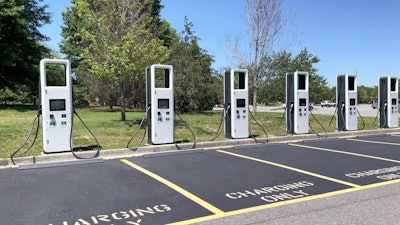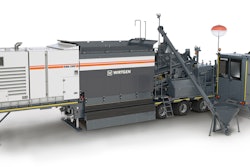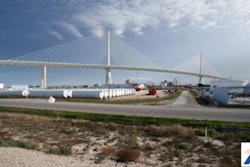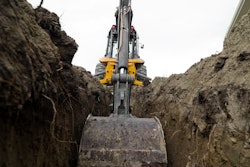
All 50 states are preparing to significantly expand the nation’s electric vehicle infrastructure with a goal of 500,000 charging stations by 2030.
The states, along with the District of Columbia and Puerto Rico, are on tap to receive $5 billion over five years to install chargers around the country as part of the $1.2 trillion infrastructure law President Joe Biden signed in November. Another $2.5 billion will be awarded in competitive grants to reach rural and underserved communities.
About $615 million is slated to reach states this year to build charging stations along Alternative Fuel Corridors designated by the states. The corridors are along interstates and federal and state highways. (For a list of where your state’s Alternative Fuel Corridors are, click here. For an interactive map of the corridors, click here.)
State EV plans were submitted by August 1 and are scheduled for approval by September 30. The Federal Highway Administration is in charge of distributing the funding via formula. (To see how much your state will receive, check out the charts at the end of this story.)
This week a partnership – consisting of a newly created federal Joint Office of Energy and Transportation, and organizations the American Association of State Highway & Transportation Officials and the National Association of State Energy Officials – held a webinar to begin discussing how to assist states in building a national charging network.
“The state plans that were submitted in August were really just the beginning of the EV deployment program,” said Jim Tymon, AASHTO executive director, during the webinar. “And now this collaborative effort with NASEO and AASHTO and the Joint Office will really help states succeed in that next stage of implementation.”
Tymon sees the funding and the collaboration delivering on several goals. “It’s the opportunity to strategically deploy EV charging infrastructure to fill in those gaps in the network and help reduce range anxiety and ensure that drivers don't get stranded, and establish some consistency from location to location.”
AASHTO and NASEO have received $1.5 million from the Joint Office to assist states with the implementation. To that end, they are developing an online EV Clearinghouse of resources for state agencies.
“This is really a historic opportunity to modernize our vehicle fleet across all classes of sectors by building out charging infrastructure, enabling private sector investment, working strategically with our local government partners across the states, across federal agencies and, of course, with utilities and other energy providers,” said David Terry, NASEO executive director. “I think approaching this work in a coordinated way, a strategic way, really will deliver value, maximize value for taxpayers, certainly for the American vehicle industry and our economy, but also for drivers.”
The FHWA charts below show how much each state will get this year and over the next five years under the National Electric Vehicle Infrastructure (NEVI) funding formula:
 This chart shows this year's state funding allotments for building a national EV charging system.FHWA
This chart shows this year's state funding allotments for building a national EV charging system.FHWA
 This chart shows the estimated five-year total funding for each state under the FHWA's NEVI funding formula.FHWA
This chart shows the estimated five-year total funding for each state under the FHWA's NEVI funding formula.FHWA











